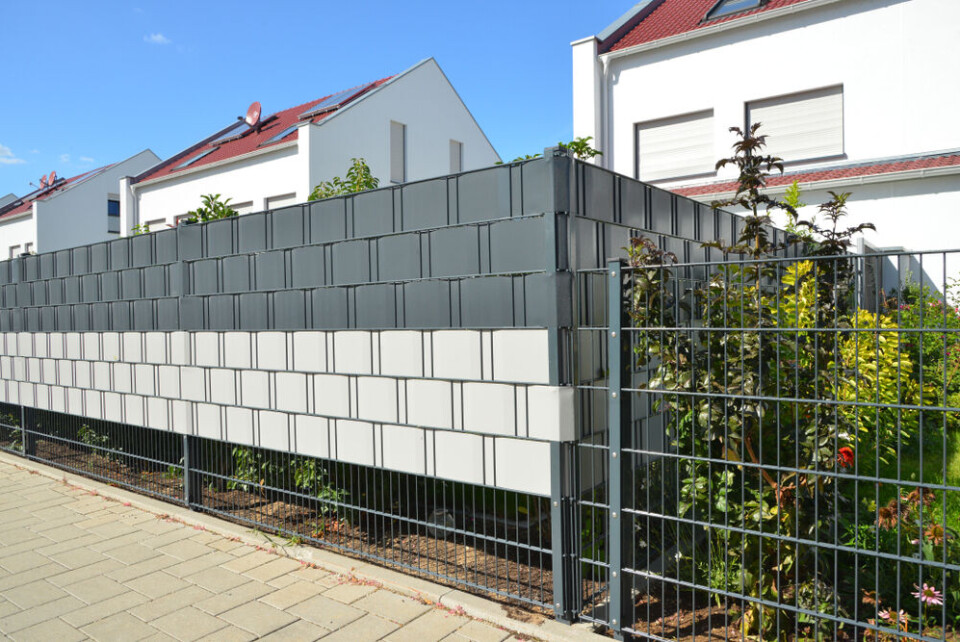-
France’s ‘garden shed’ tax rates fall for first time in nine years: 2026 rates
Tax is paid on a per m² basis for many property improvements, with fixed values in place for some installations
-
How can I protect my second home in France from mice while I am away?
Pests can enter homes at any period
-
January flowers in your French garden with scented viburnum
Our gardening columnist explores a pretty pink shrub that gives long-lasting winter displays
Can I put up a privacy shield in my French garden?
Barriers may have additional requirements for installation, particularly if installed at the border of your property

Reader Question: We have a privacy shield in our garden in England, and want one at our second home in France. Is it possible to put one up, and if so are there limits?
A privacy shield (brise-vue) can come in a number of formats, usually a fence-like series of screens or panels, or occasionally a hedge or trellis.
They can be made of many different materials including plastic, metal, or wood such as wicker or bamboo.
They block the view into your garden or parts of your home open to view (such as conservatories or balconies) from certain angles, including from your neighbour's property or roads/paths nearby.
You cannot ask a neighbour to install a privacy screen on their land, and in turn they cannot ask you to take yours down except in certain circumstances.
Shields have other functional purposes
If you are installing a privacy shield, you should think about what areas from which you are trying to limit views.
For example, if your property is on a raised plot of land (or you are blocking out a balcony higher up), they will not need to be very tall to stop people looking in.
Alternatively, they may need to be more opaque if you live close to a road with lots of traffic, to prevent people driving slowly seeing in.
Alongside creating a visual barrier, a brise-vue can also block out sunlight and wind, as well as help you delineate your garden or land into more specific areas.
One thing to consider is that your privacy shield must not clash with the local cultural aesthetics of your area (if such rules apply) and must also not prevent views of the natural area for others (articles R*111-27 and R*421-12 of the urban code).
Read more: Do I need to declare changes to shutters at my French house?
Installation rules
Generally, privacy shields are not durable enough to be placed at the limit of your property to denote a boundary like a fence although made with reinforced materials may be strong enough to do so.
You will need your neighbour’s permission if you want to install a privacy shield on your side of a shared wall as stated by Article 662 of the French civil code.
If you both agree for one to be installed as a border fence or on an existing one you must share the costs.
Read more: Explainer: Rights and obligations for shared garden walls in France
Read more: Can I build on shared wall between neighbour’s and my French property?
Whilst they can be placed on a wall you fully own at the limit of your property, you need to make sure it does not interfere with the rights of your neighbour.
In short, it is best to discuss the project with your neighbour before starting.
Privacy shields are classed as fences regardless of their strength, if put up by the border of properties where a fence would traditionally be.
They have to adhere to minimum (not maximum) height rules.
They must be taller than 2.6 metres in towns with fewer than 50,000 people, and taller than 3.2 metres in towns larger than this.
This only applies to privacy shields installed into the ground on your land, and not those added to balconies or terraces.
Maximum height rules may apply, depending on your commune’s plan local d’urbanisme (PLU, or local planning code).
If your privacy shield is a hedge it must be at least half a metre from your property boundary, to ensure it does not spill over into your neighbour’s land.
However if the hedge is two metres or taller, it must be two metres from the limit of your property.
Do I need planning permission?
Planning permission is not required if the privacy shield is not doubling up as a fence at your property limit.
If it is, however, you will need to submit a déclaration préalable de travaux (DP) to your mairie.
If you live in a protected area (sectuer protégé) the Architecte des Bâtiments de France must be consulted before work begins, and you must wait two months after submitting your DP request, instead of the usual one.
Those living in areas covered by a Plan de Prévention du Risque inondation (flood risk prevention plan) or other habitat such as natural forested areas should contact their mairie about the project, to ensure PLU codes are not broken and any additional restrictions met.
Related articles
‘Garden shed’ tax in France: what rises in 2024 and what exemptions?
Family may have to move as cannot uproot ‘dangerous’ tree in France
























